When Trying to Reinstall PS4 System Won't Recognize USB Drive: How to Fix and Recover Your Data
Category: iOS Data Recovery

3 mins read
If you are facing the frustrating issue of when trying to reinstall PS4 system wont recognize usb drive, you are not alone. Many PS4 users encounter this problem when attempting to connect a USB storage device PS4 for system reinstallation. This issue can halt your progress and even risk data loss if not handled properly. In this article, we will explore why this happens, provide clear, step-by-step solutions to fix it, and recommend a reliable data recovery tool to safeguard your important files.
In this article:
Why Does PS4 Not Recognize USB Drive When Reinstalling System?
Understanding the reasons behind the problem is the first step toward solving it. Here are the most common causes why your PS4 might not recognize the USB drive during system reinstallation:
01 USB Drive Format Is Not Supported
PS4 only supports USB drives formatted in FAT32 or exFAT. If your USB drive is formatted in NTFS or other unsupported formats, the PS4 will not detect it.
02 Incorrect Partitioning of USB Drive
The USB drive must have a single primary partition. Multiple partitions or extended partitions can cause recognition issues.
03 Wrong Folder Structure or File Name
The PS4 requires the system software file to be placed in a specific folder path on the USB drive:
PS4 > UPDATE > PS4UPDATE.PUP
Any deviation from this structure or file name will prevent the PS4 from recognizing the USB drive.
04 Hardware Issues with USB Drive or Port
Faulty USB ports, damaged USB cables, or a malfunctioning USB drive can cause recognition problems.
05 PS4 System Software or Firmware Glitches
Sometimes, outdated or corrupted PS4 system software can interfere with USB drive recognition.
How to Fix PS4 Not Recognizing USB Drive When Reinstalling System
Now that you know the reasons, let’s move on to practical solutions. Follow these clear steps to fix the issue of when trying to reinstall PS4 system wont recognize usb drive.
Step 1 Format Your USB Drive Correctly
- Connect your USB drive to your computer.
- Open "This PC" (Windows) or "Disk Utility" (Mac).
- Right-click on the USB drive and select "Format" (Windows) or choose the drive and click "Erase" (Mac).
- Select FAT32 for drives 32GB or smaller, or exFAT for larger drives.
- Confirm and start formatting.
Formatting your USB drive properly ensures the PS4 can detect it when you try to ps4 connect usb storage.
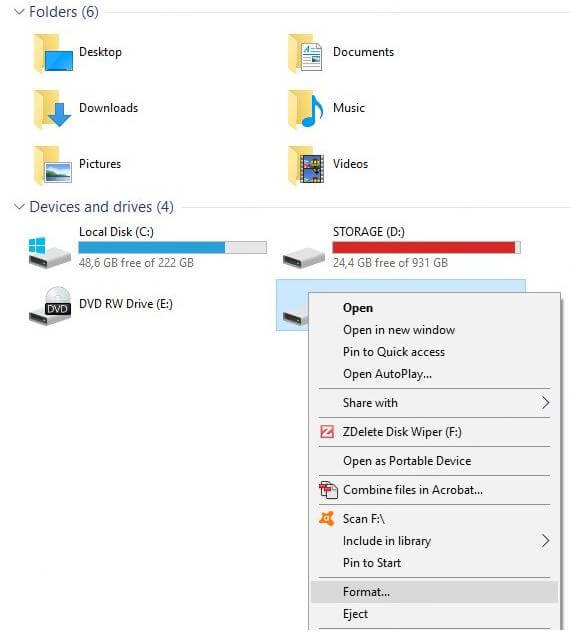
Step 2 Create the Correct Folder Structure and Download Firmware
- On your formatted USB drive, create a folder named PS4
- Inside the PS4 folder, create another folder named UPDATE.
- Download the latest PS4 system software from the official PlayStation website.
- Save the downloaded file as PS4UPDATE.PUP inside the UPDATE folder.
This exact folder and file structure is crucial for the PS4 to recognize the USB drive during system reinstallation.
Step 3 Use a Different USB Port or USB Drive
Try plugging the USB drive into a different USB port on your PS4. If the problem persists, test with another USB drive that meets the formatting requirements. This helps rule out hardware faults.
Step 4 Restart PS4 and Enter Safe Mode
- Turn off your PS4 completely.
- Press and hold the power button until you hear two beeps (about 7 seconds).
- Connect your USB drive to the PS4.
- Select option 7: Reinstall System Software from the Safe Mode menu.
This method often bypasses minor system glitches and allows the PS4 to detect the USB drive properly.
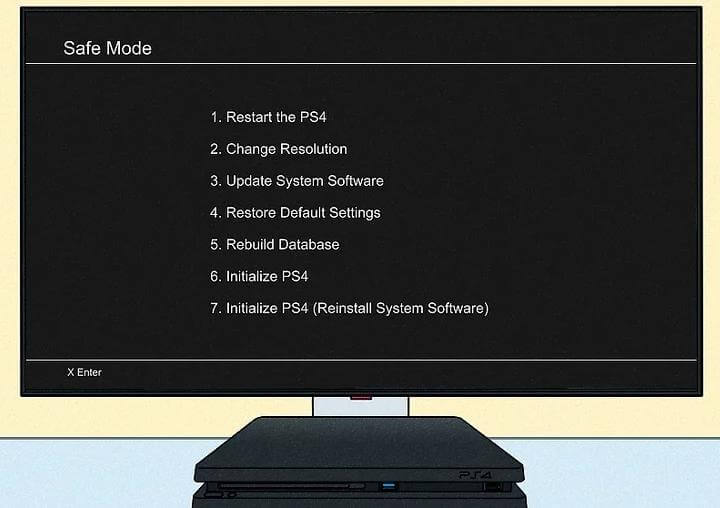
Step 5 Update Your PS4 System Software
If your PS4 system is outdated, update it before attempting reinstallation. Sometimes, an update fixes bugs related to USB recognition.
Step 6 Check Hardware for Damage
Inspect your USB cables and ports for any visible damage. Replace faulty cables or clean the USB ports gently to ensure a good connection.
How to Recover Lost Data During PS4 USB Issues
Sometimes, formatting or errors with USB drives can lead to data loss. If you have important files on your USB or device that you fear losing, it’s essential to use a reliable data recovery tool.
01 Recommended Tool: iMyFone D-Back
iMyFone D-Back is a powerful and user-friendly data recovery software that supports iOS, Windows, and Mac platforms. It can help you recover lost or corrupted files, including photos, videos, documents, and more.
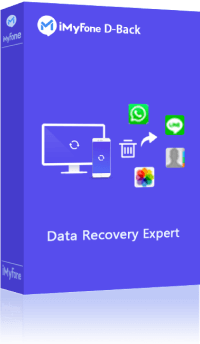
1,000,000+ Downloads
Key Features:
- No Jailbreak or Root Required: Recover data safely without compromising device integrity.
- Supports Multiple Recovery Modes:Recover directly from device memory or from iCloud/iTunes backups for iPhone; from device memory or Google backups for Android.
- Preview Before Recovery: View recoverable contacts with details like phone numbers and emails before restoring.
- Wide Compatibility: Works with nearly all iPhone and Android models and OS versions.
- User-Friendly Interface: Designed for users of all technical levels.
02 How to Use iMyFone D-Back for Data Recovery
Step 1: Download and install iMyFone D-Back on your computer.
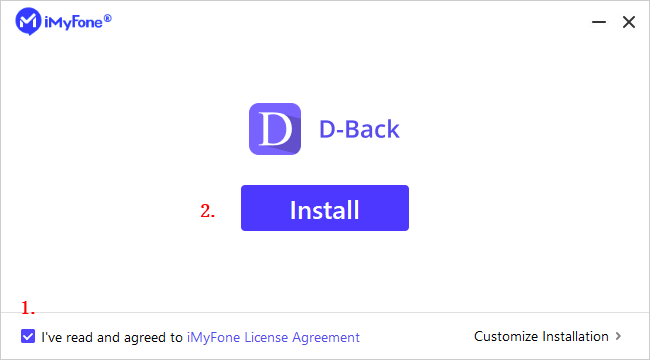
Step 2: Connect your device or USB drive to the computer.
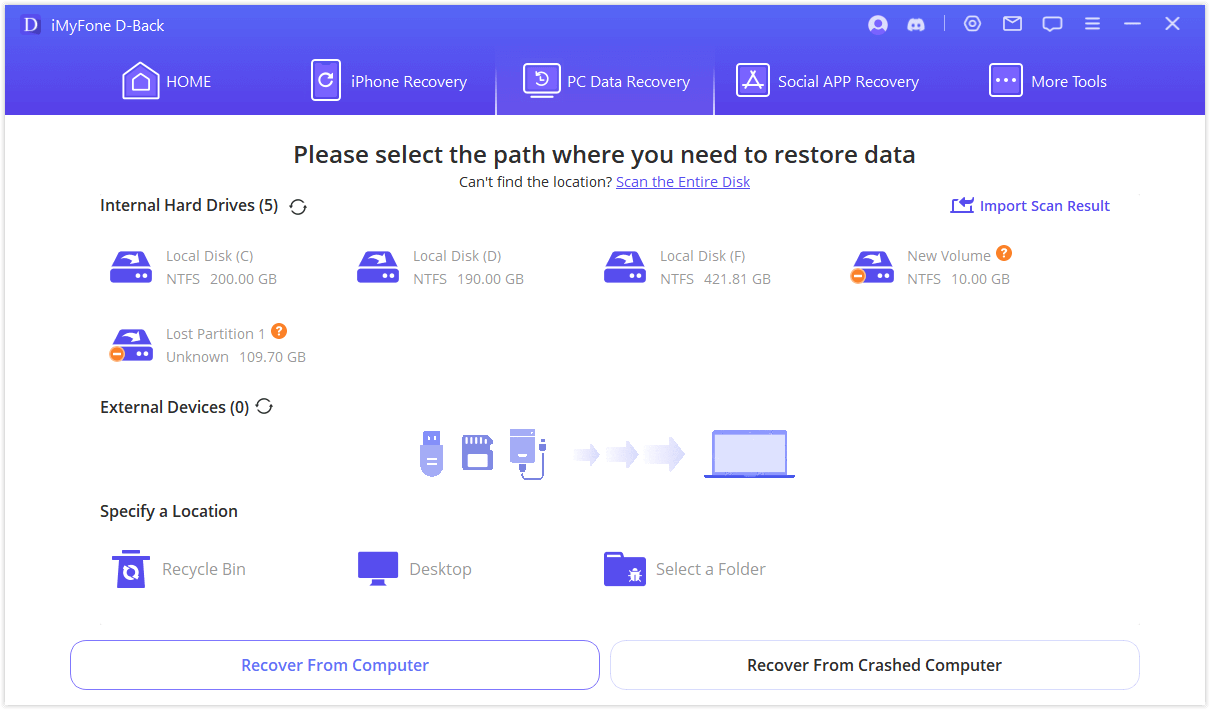
Step 3: Launch the software and select the appropriate recovery mode (e.g., external device recovery).
Step 4: Click Scan to search for recoverable files.
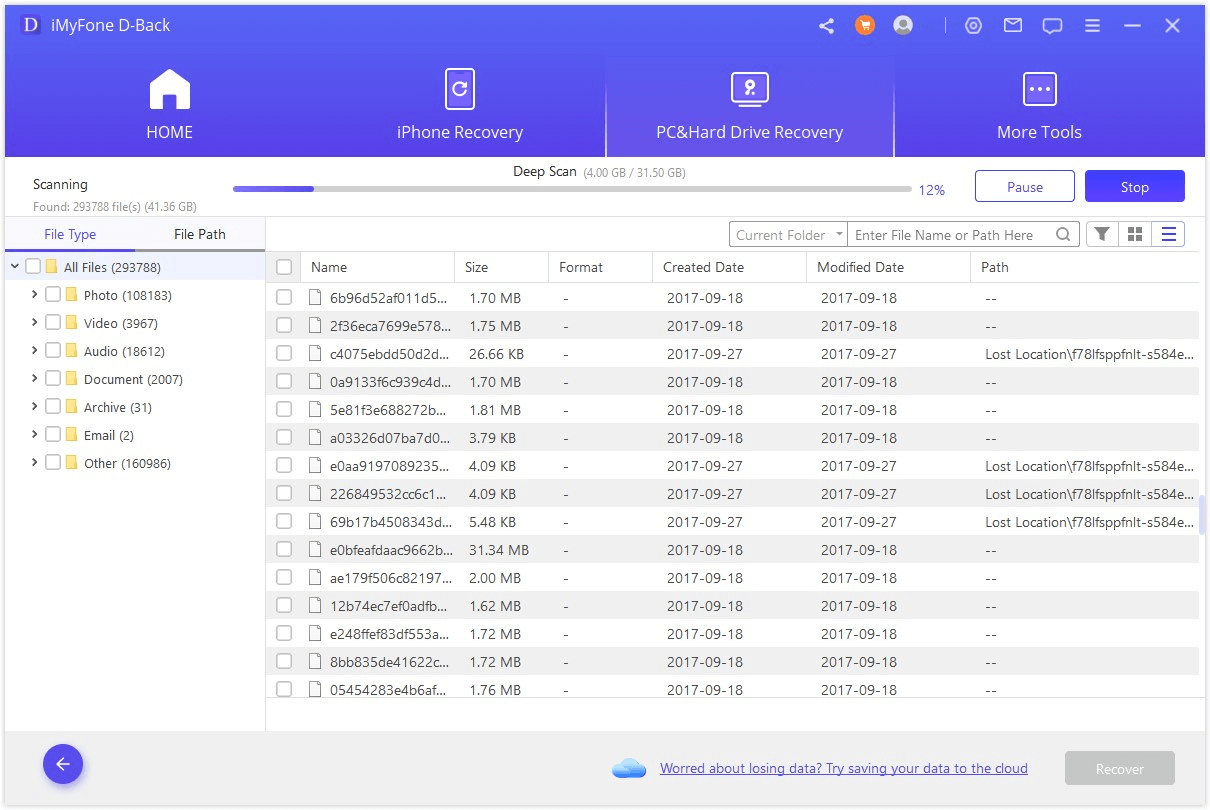
Step 5: Preview the files and select those you want to recover.
Step 6: Click Recover to save the files to a safe location.

Using iMyFone D-Back ensures that even if your USB drive causes issues during PS4 system reinstallation, your important data remains safe and recoverable.
Conclusion
Facing the problem of when trying to reinstall PS4 system wont recognize usb drive can be frustrating, but with the right knowledge and tools, you can fix it effectively. Always make sure your USB drive is formatted correctly, the folder structure is precise, and your hardware is functioning well. If data loss occurs during the process, tools like iMyFone D-Back offer a reliable solution to recover your files on iOS, Windows, or Mac platforms.
By following these steps, you can smoothly connect a usb storage device PS4 and complete your system reinstallation without further issues. Remember to keep backups of important data and handle your USB drives carefully to avoid future problems.















